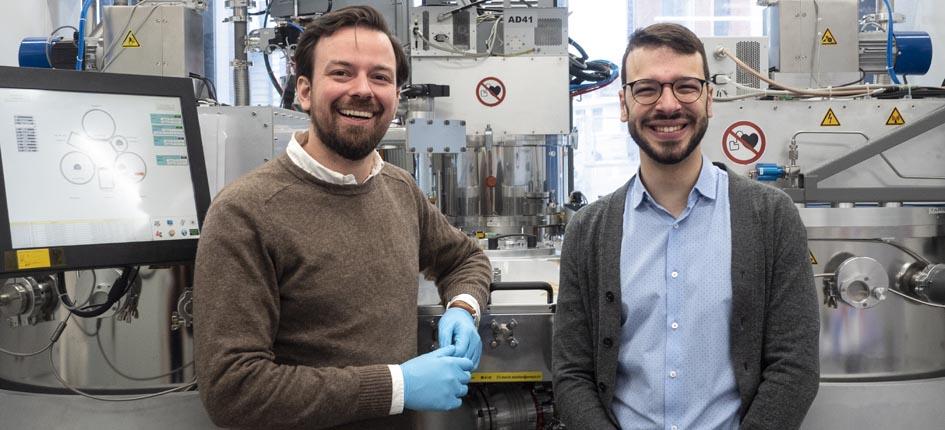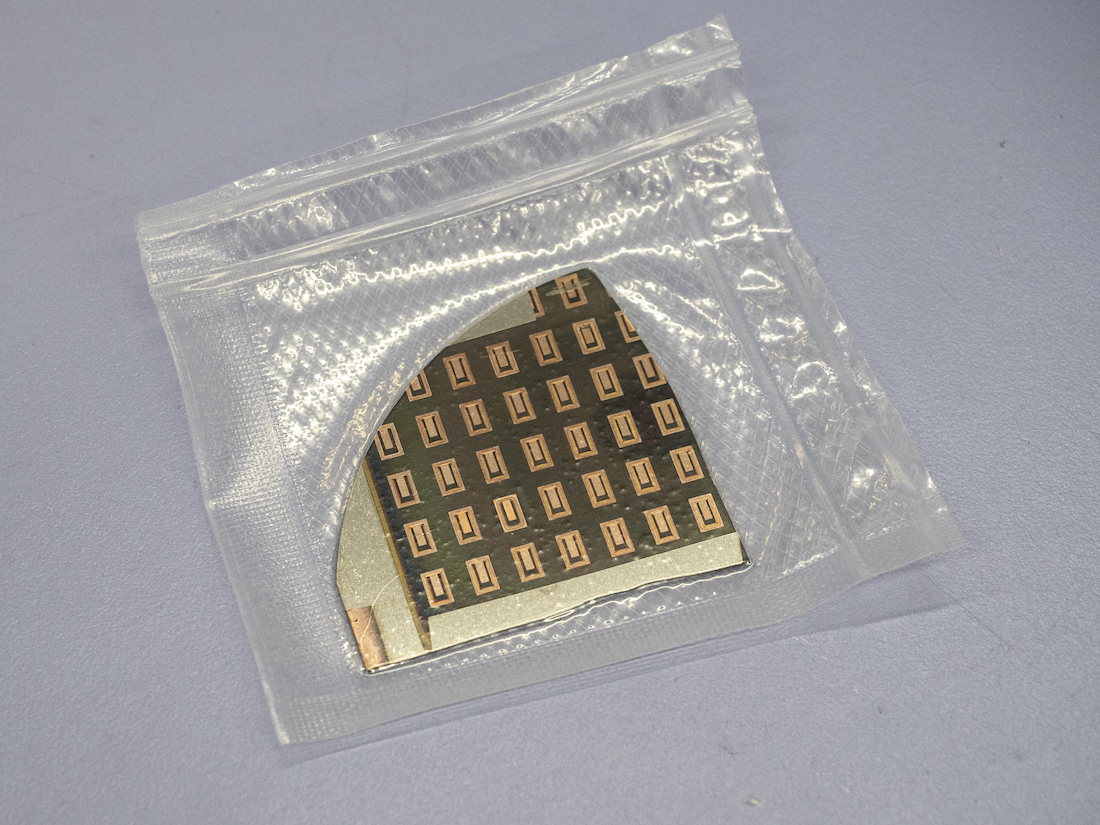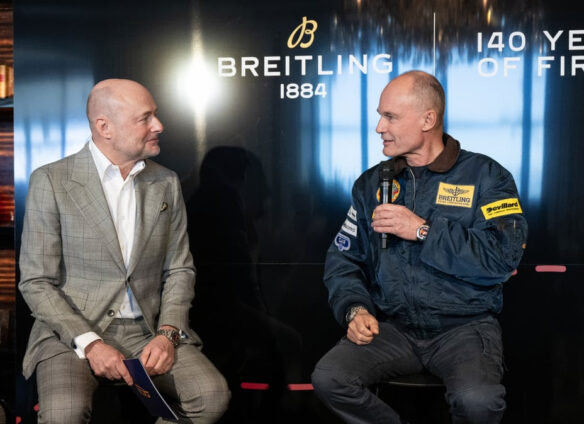Tokyo (SCCIJ) – The Swiss start-up BTRY wants to revolutionize rechargeable batteries: Their thin-film batteries are safer, longer-lasting, faster charging, and more environmentally friendly to manufacture. The battery is still very small, but the founders have big plans for it.

CEO Moritz Futscher and CTO Abdessalem Aribia (from left) have developed a successor to lithium-ion battery technology with their thin-film solid-state battery (© Empa).
Many advantages
According to the researchers Abdessalem Aribia and Moritz Futscher from the Thin Films and Photovoltaics Lab of the Swiss Federal Laboratories of Material Sciences (Empa), it is time to rethink battery technology. Their lithium metal-based solid-state battery brings some significant advantages: It can be charged and discharged within one minute, lasts about ten times as long as a lithium-ion battery, and is insensitive to temperature fluctuations.
In addition, unlike lithium-ion batteries, it is not flammable – a major advantage, because today’s rechargeable batteries are considered hazardous materials. Incorrect handling or damage to a conventional lithium-ion cell can lead to a fire that releases toxic gases and is extremely difficult to extinguish. “By contrast, if you cut our battery with scissors,” Aribia says, “you will simply get two batteries that are half as good.”
Aribia and Futscher are now bringing this technology to market. Together with lab head Yaroslav Romanyuk, they founded the spin-off BTRY (pronounced “battery”). Aribia, who takes on the role of Chief Technology Officer at BTRY, had never previously thought of starting his own company. Futscher, who acts as the CEO, has been interested in startups since he was a student.

The thin-film solid-state battery invented in Switzerland is still very small, but is being enlarged to prove the possibility of mass production (© Empa).
High-precision manufacturing
Thin-film solid-state battery have been known since the 1980s. However, due to the very low mass of their thin-film components – the entire cell is only a few micrometers thick – they have been able to store very little energy so far. But Futscher and Aribia have succeeded in stacking the thin-film cells on top of each other, increasing their capacity.
The cells are manufactured using vacuum coating: The desired materials are atomized in a vacuum chamber to form individual atoms, which are then deposited in a precisely controlled layer on the target substrate. “Such manufacturing methods are currently used on a large scale in the production of semiconductor chips and glass coatings,” Futscher explains. “That’s an advantage for us because the machines and know-how to manufacture our battery are largely in place already.”
The high-precision manufacturing method has the additional advantage that it does not use toxic solvents. However, it also makes the thin-film battery more expensive. The researchers therefore see its application primarily in products where the battery only accounts for a small part of the overall cost of the device, like in smartphones, smartwatches, or satellites. Over the next two years, the researchers plan to increase both the surface area of the battery and the number of layers to prove that their approach is scalable.
Text: Empa/BTRY (Editing by SCCIJ)





























